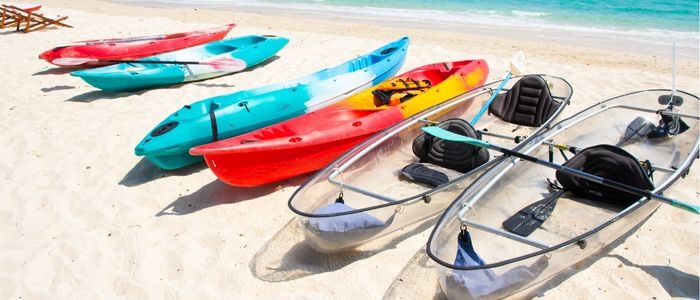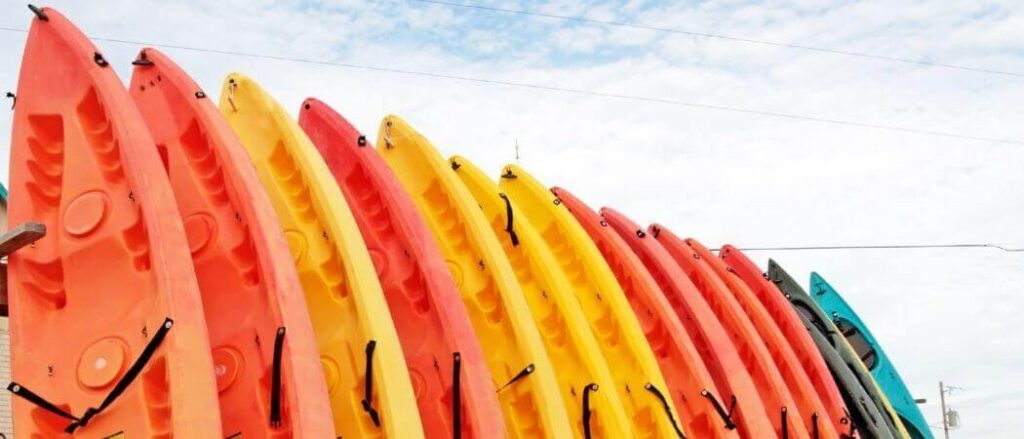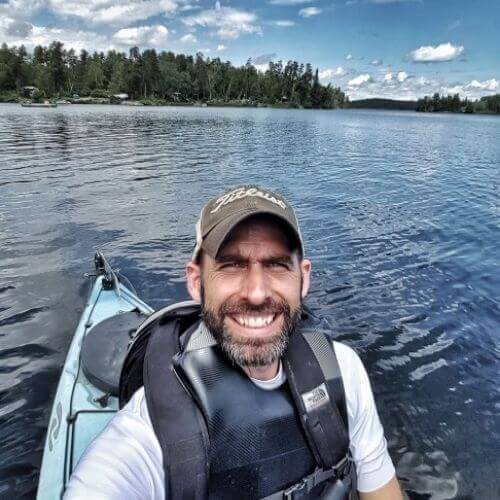
Are you wondering why do kayaks have holes? Why do some kayaks have holes but others haven’t? Why not kayaks sink when they have holes in the floor? These questions come into everyone’s mind when they see holes in kayaks. So, you are not alone.
Sit on Top kayaks have holes in the bottom to drain out the water that comes in through puddles. These holes are specially designed so that they only drain out water but don’t let the water come in.
Now, you must wonder how those holes drain out the water and prevent water from coming in. How is it possible? So, let’s discuss this topic in detail and get to know everything about holes in kayaks.

Sit-on-top kayaks have holes in the bottom called scuppers. Basically, scuppers are specially designed holes that allow water to drain out without allowing more water to come in. This keeps you dry while allowing any water that pools on your kayak from slowing you down.
If you have ever been kayaking on a lake or river, you have probably noticed a lot of water splashes into your boat. Because you are so close to the water, it’s hard to avoid water coming into your kayak.
This is why kayaks have holes in the bottom to drain out the water that comes in through puddles. These holes are specially designed so that they only drain out water but don’t let the water come in.
Now you must wonder how these holes prevent water from coming in; instead, they drain out the water.
To keep water from getting in through this hole, many companies provide plugs or other types of sealant that can plug up the scupper as needed since it’s not always necessary to have it open when you are paddling around.
For example, if you are just floating on still waters and not worried about waves splashing into your boat, then you don’t need to worry about opening your scupper.
The scupper allows water to drain out of the kayak so that the whole thing doesn’t fill up with water when it’s splashed by waves or begins to sink in rough waters.
The scupper lets any water that gets in through the top of the kayak drain back out again without soaking you or tipping you over. And after draining out the water, you will have to plug the scupper back and seat it to prevent water from coming inside the kayak.
But remember, scupper holes can only drain water if the kayak is on calm water and does not move. Otherwise, the holes will act in the other way, and instead of drainage, they will let water comes in, eventually filling and draining your kayak.
There are two major types of kayaks, and which kind you are looking at explains why it has those holes.
Sit-on-top kayaks are open on top, meaning water can get inside through puddles. These are great for beginners because they’re very stable and easy to use. But since they’re open, they need a way to drain any water that gets inside. The holes in the floor help with this by letting excess water out of the boat.
Sit-inside kayaks have closed compartments for riders to sit inside. Because of this structure, water puddles don’t get into the boat as easily, but if they do, there’s no hole to let them drain! So, it wouldn’t make sense for sit-inside kayaks to have holes in their floors.
Scupper holes do not cause Kayak to sink. Scupper holes are designed to drain water away from the inside of your boat, which is helpful for keeping your kayak dry, but not for keeping your kayak afloat.
You may know that there are always many scupper holes inside sit on top kayaks. These multiple holes drain out the water. If water starts coming from one hole, the other one will start draining it. That is why a Kayak can’t be sunk due to scupper holes.
While scupper holes are great for relieving any excess water in the cockpit after a splash or wave, they don’t help prevent your kayak from sinking. In fact, if you are trying to stay dry on a windy day and haven’t plugged your scupper holes yet, it may be best to plug them with scupper plugs.
Now, you know how scupper holes help work in a kayak, but you must be wondering what scupper plugs are then. So, let’s find out.
Scupper plugs are simple little caps that plug up the holes in your kayak. They keep water from coming in from scupper holes when you are on the water. And then, because the plugs are made from a foam material, you can easily pull them out when you need to open the holes and drain the water.
They are especially helpful if you are paddling in rougher waters where there is more water coming over the holes and edges of your kayak. Without scupper plugs, water will continue to enter the cockpit from these scupper holes. In addition, they can be useful if you have a smaller boat where a huge amount of water pools in the cockpit.
You can use scupper plugs when a lot of water comes straight from your kayak’s holes. It usually happens when you are kayaking in rough waters or when you have exceeded the weight limit of your kayak.
Scupper plugs will fill the holes and prevent the water from coming in and out of the holes. Besides, they can also be used when your kayak is parked on the water, and you are not on it. Scupper holes will prevent the water from coming into the kayak and destroy your belonging in this situation.
The problem is that many people do not know how to properly use their scupper plugs. Here are some tips on how to properly use them.
If you are sure that the water is coming from the scupper plugs or holes and not from anything else, you can try the following fix.
Scupper holes can be a great way to keep your boat dry, but only if they’re maintained properly. Here are some tips for caring for your scupper holes.
Always keep all the scupper holes in your Kayak clean and free from dirt, debris, and blockage.
Over time, the hole can get clogged with hair or filled with debris. You may need to open it up a bit more by cutting away some of the surrounding material.
Make sure there is an easy path down into the scupper hole. This will help encourage liquids to flow out of it instead of sitting around inside your boat.
Here I have briefly explained why do Kayaks have holes inside them. Besides, I have also explained everything related to the scupper holes and scupper plugs so that you can use and maintain your kayak for long time usage.

Hey there kayak lovers! I’m Jay Schwartz, the author here at Kayak Guidance! You know water sports – you know me! My life is all about it. Kayaking, Paddleboarding, Fishing, Snorkeling and so much more. I love to share my passion and knowledge with all of you.

Hey there kayak lovers! I’m Jay Schwartz, the author here at Kayak Guidance! You know water sports – you know me! My life is all about it. Kayaking, Paddleboarding, Fishing, Snorkeling and so much more. I love to share my passion and knowledge with all of you.

Welcome to KayakGuidance.com! If you’re looking to have some fun outdoor water adventures, then you have come to the right place. We help our readers find the best kayaks and water related equipment to help you have the best time of your life whenever you are engaging in water activities.
This site is a participant in the Amazon services LLC associates program, an affiliate advertising program designed to provide a means for sites to earn advertising fees by advertising and linking to Amazon.com.